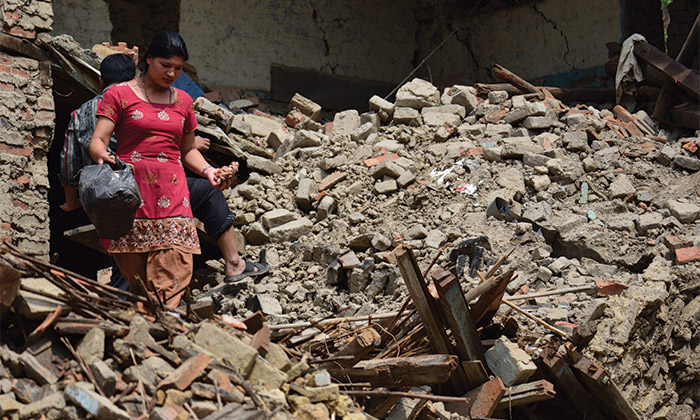
“There’s no such thing as a purely ‘natural’ disaster. These events enter into what’s already in place in terms of class, race, gender, poverty, and other factors—they therefore have differential effects.”
That’s the core insight guiding Joni Seager’s work on the gendered nature of natural disaster outcomes, and it’s one that she’s quick to point out builds on the work of many other scholars in the field. For a long time, Seager says, the class implications of natural disasters have been obvious, as the poor are the least resilient with the fewest resources. In the last few years, however, Seager and others have been looking at the gendered aspects of natural disaster preparedness and disaster recovery efforts around the world -- and the implications for women are troubling.
In the 2004 Indian Ocean earthquake and tsunami, for example, death rates for women were four to five times higher than those for men. In the 1995 Great Hanshin earthquake in Kobe, Japan, 1.5 times more women died than men. Similar rates exist for the 1991 cyclone and floods in Bangladesh and a whole range of other disasters. What drives these differentials?
Part of it is the link between women and poverty: greater numbers of the poor tend to be women and the poor are more vulnerable to disasters. They often live in substandard housing, have less access to emergency alerts and services, and are unable to rebound quickly from disasters. Seager, a professor of global studies, sees a clear “multiplier effect” of poverty and gender in looking at these tragedies.
Other factors are at work as well, most notably the familial caregiver role that most women find themselves in. While a man may be able to get to safety quickly on his own, in many societies women are responsible not only for themselves but also for multiple young children and elderly relatives, vastly diminishing their ability to get out of harm’s way quickly. Such familial roles also limit women’s ability to be mobile in the wake of a disaster. As Seager says, “traditional roles and family responsibilities can be real anchors.”
These roles place women and girls at greater risk in the aftermath of disasters as well, putting them at greater risk for everything from malnutrition to disease to human trafficking as they remain “locked in place” in devastated areas. While men have greater mobility and can migrate out of the area for new livelihoods, women and girls have a harder time finding replacement work when their industries have been devastated.
Gendered divisions of labor also come with spatial divisions. In the 2004 tsunami traditional male and female labor roles played a huge part in death rates. Many men were lucky enough to be fishing out on the open sea—and thus relatively untouched by the tsunami—while women were working in the fishing industry along the coast itself, directly in the greatest danger zone.
What can be done to reduce these risks and mitigate these harms for women, especially in disaster-prone areas? Seager and colleagues argue that first, policy makers need to acknowledge these intersecting gender and class differentials when considering disaster risk-reduction policies and developing disaster recovery plans. “If we don’t have gender sensitive policies, we won’t be creating effective disaster plans overall,” Seager explains.
Seager argues that, for example, food aid should be given to women first, not men, since studies show that women will share food more effectively through families and communities recovering from disasters. Accommodations also need to be made for women’s and girls’ specific health care and sanitation needs. Policies need to be put in place to protect women and girls from sex trafficking and sexual violence since research shows both surge in the wake of disasters. Even something as seemingly gender-neutral as access to mobile phone technology needs to be assessed with gender differentials in mind: if emergency alert systems are migrating to mobile devices, women need to have as much access to these as men.
Climate change will produce more frequent and more intense natural disasters in the years ahead -- with women and girls, and the poor (among whom they are disproportionately represented) experiencing a corresponding increase in risk of harm. Seager’s research suggests there’s nothing inherently “natural” about such outcomes. Clear policy changes that address gender differences and incorporate them into the planning phase for disaster recovery can divert and diminish this growing problem.
Image credit: Somjin Klong-ugkara/Shutterstock.com

